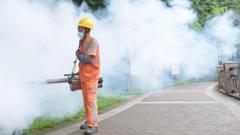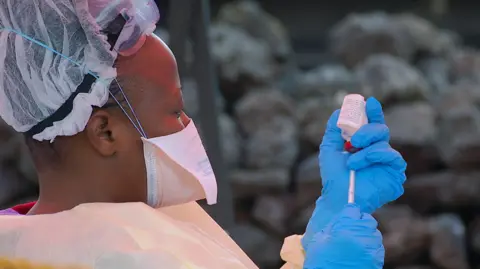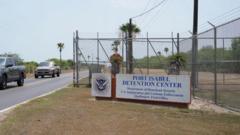Since July, Guangdong province in China has reported more than 7,000 cases of chikungunya, a mosquito-borne disease that leads to fever and debilitating joint pain. Health authorities are taking a proactive stance by implementing measures akin to those seen during the COVID-19 pandemic, particularly in the city of Foshan, which has been significantly affected. Hospitalized chikungunya patients are kept under close observation, required to remain in beds safeguarded by mosquito nets until cleared of the virus with testing or after a week of treatment.
The outbreak marks an unusual event in China, as chikungunya is typically more prevalent in regions of South and Southeast Asia and parts of Africa. Following the recent spike in infections, Foshan has seen close to 3,000 cases reported in just the last week, alongside at least 12 other cities in Guangdong also experiencing outbreaks. Hong Kong has reported its first case as well, tied to travel from Foshan.
Health officials affirm that although the virus is not contagious between humans, the panic surrounding this disease stems from it being relatively unknown in the region. Reactions on social media reflect this concern, with many expressing fear of the potential long-lasting impacts of the virus.
In response, the United States has advised travelers to China to exercise increased caution. Local health authorities are undertaking expansive measures to curb further infections, including encouraging residents to eliminate stagnant water around their homes—breeding grounds for mosquitoes—and threatening fines up to 10,000 yuan (approximately $1,400) for noncompliance.
Moreover, officials are releasing “elephant mosquitoes,” which prey on smaller mosquitoes that carry chikungunya, into affected areas. In a unique approach, the city has also introduced fish that consume mosquito larvae into local water bodies. Unmanned aerial vehicles (drones) are being utilized to identify areas with stagnant water to further mitigate mosquito breeding.
While some neighboring areas have enforced quarantine measures for travelers from Foshan, these mandates have faced scrutiny about their necessity, prompting discussions reminiscent of earlier health crises.
Understanding chikungunya is vital; most individuals infected exhibit symptoms within three to seven days, including fever, joint pain, headache, and potential rashes. Though most recover within a week, some face extended joint pain lasting months or years, particularly vulnerable populations such as the elderly and those with pre-existing health conditions. There is currently no known cure for chikungunya; however, fatalities remain rare. The virus, first recognized in Tanzania in 1952, has since spread to over 110 countries worldwide, with prevention through mosquito control emphasized by health experts.






















